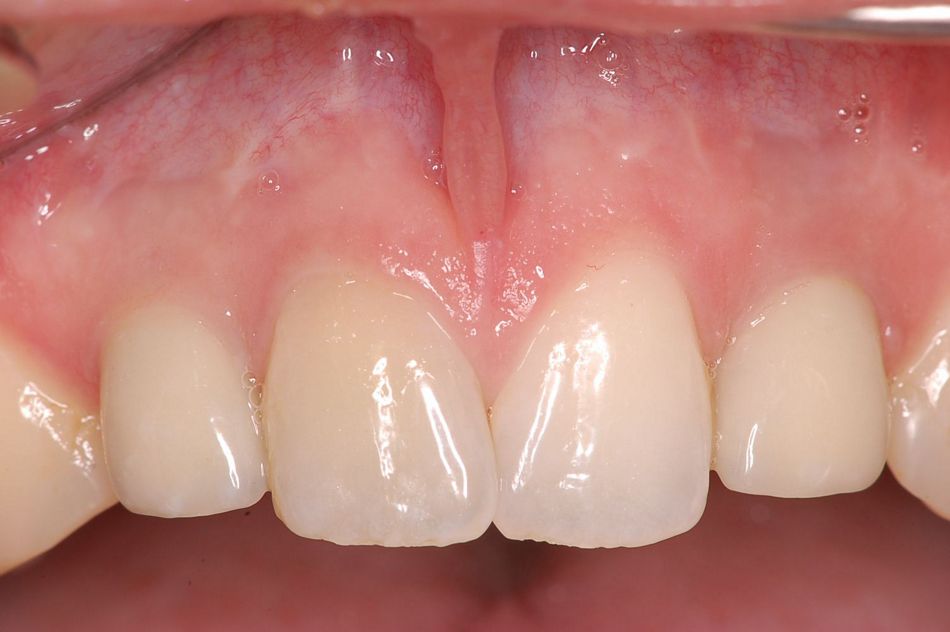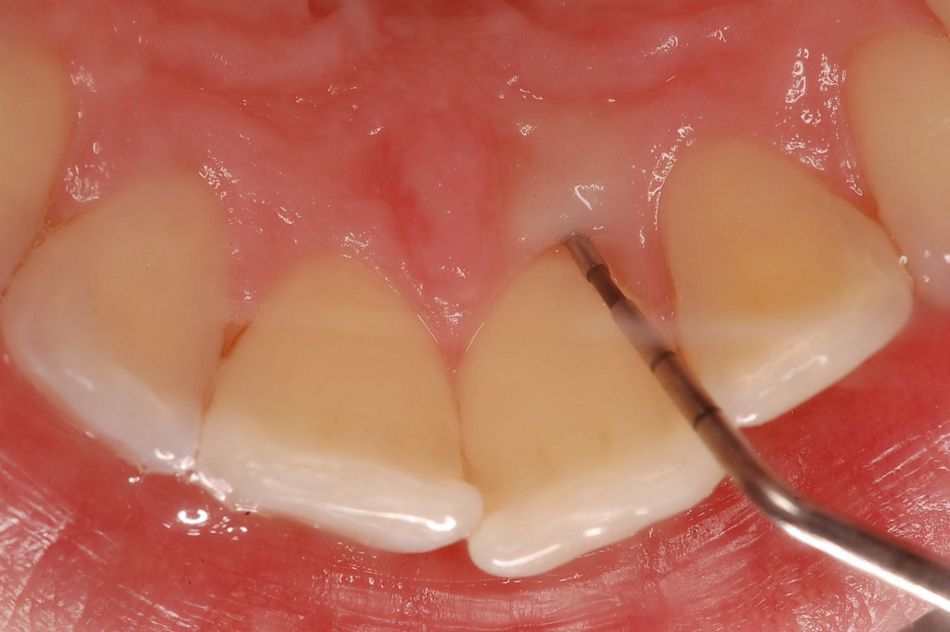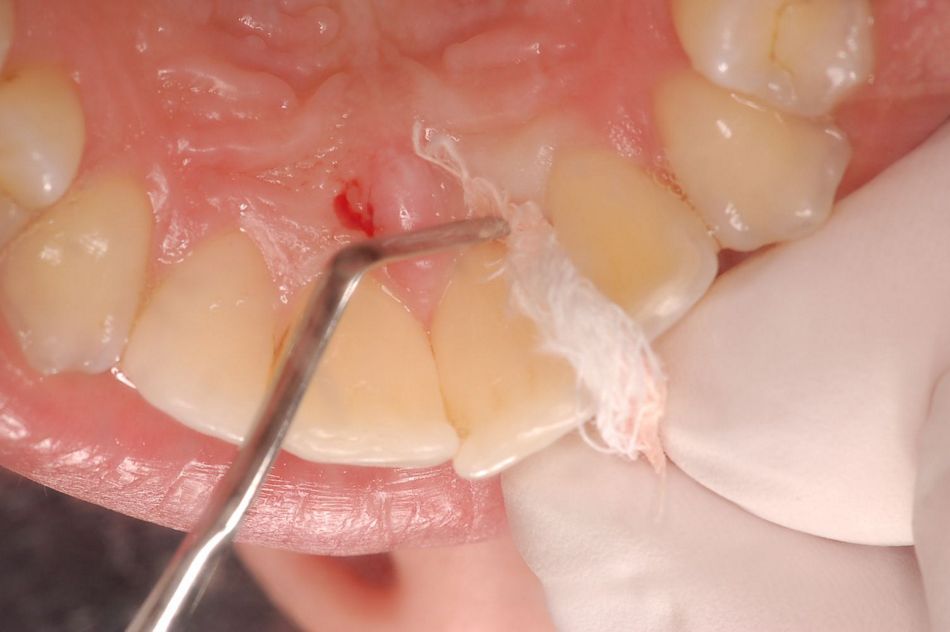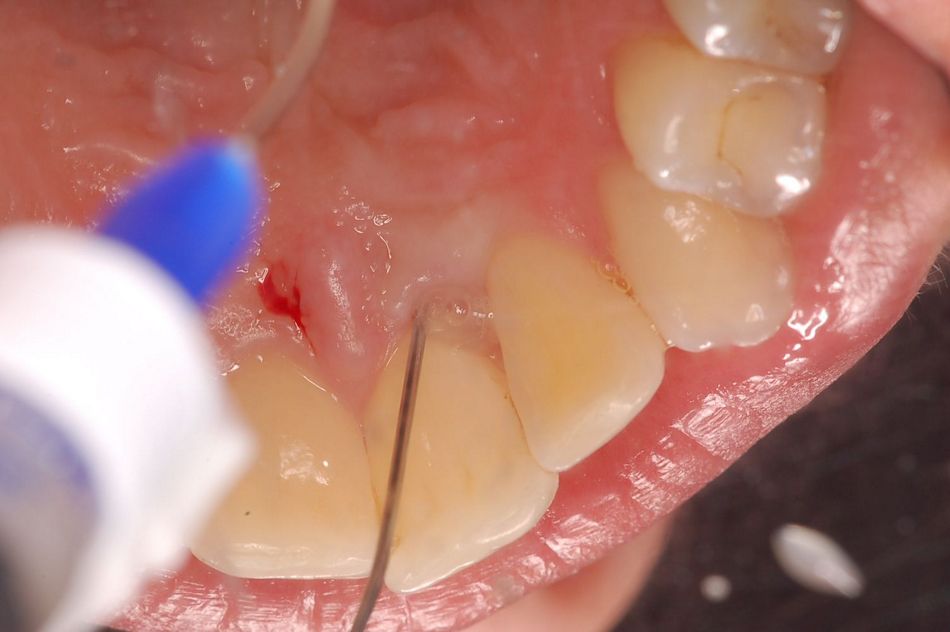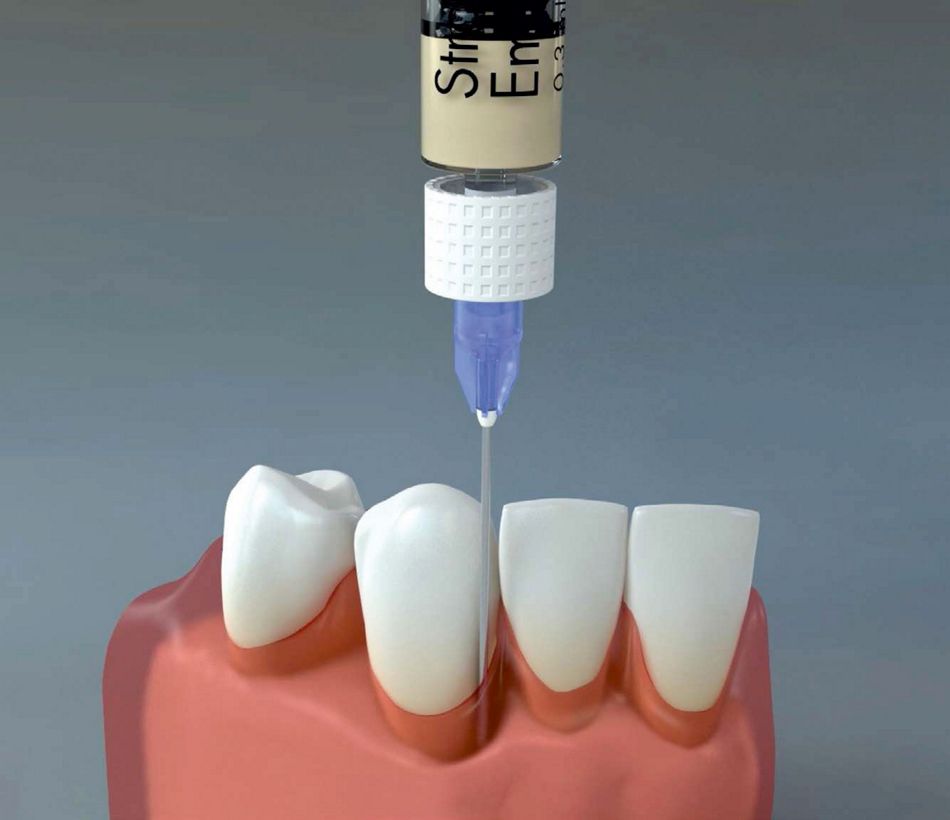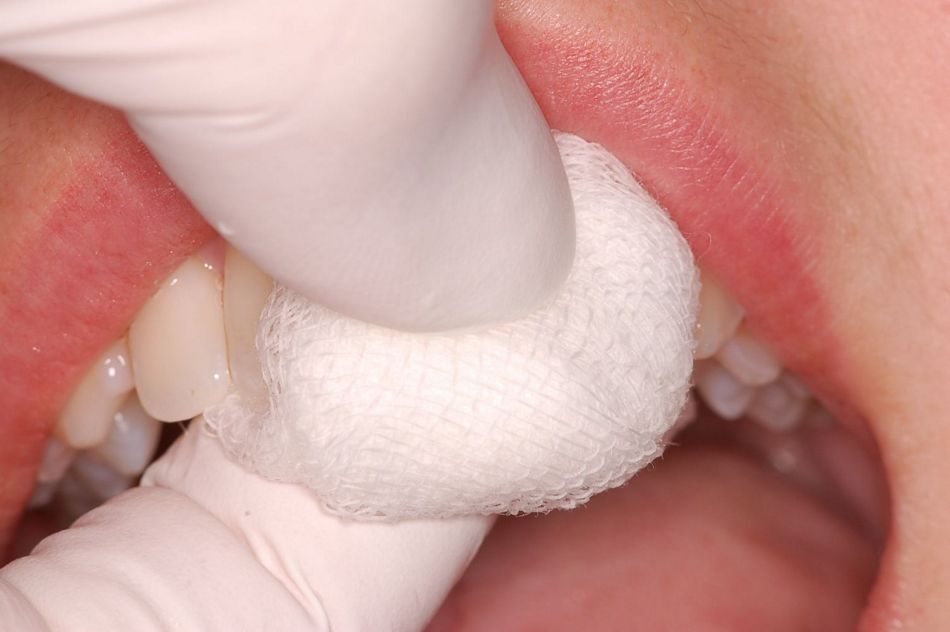"The treatment with Emdogain is as familiar to me as the feeling of coming home," says Min-Young Kim, describing his many years of experience with Emdogain®, which has been tried and tested in periodontology and implantology for 25 years. "My confidence in the therapy has grown steadily and I think it is absolutely safe. Since I started practicing, I have never had bad results due to the preparation.” Dr. Kim, who has had his own practice in Osnabrück, Germany since 2004 together with Dr. Barbara Herzog, summarizes few points that are convincing for periodontists and implantologists "the most simple and safe handling, good tissue compatibility, good clinical results and broad areas of application, both for open and closed regenerative procedures."
Over the past 25 years, procedures have become less invasive: the new therapy approach with Emdogain® FL (flapless), which Straumann presented at IDS 2019, aims at the gentle use of Emdogain without flap surgery; a patient-friendly procedure, because "the enthusiasm of the patients about surgical-regenerative therapy procedures was retrospectively to be classified as rather restrained compared to other interventions", Kim knows. He treated his first case with Emdogain® FL in October 2019. “The young woman came to our practice with bony defects in regions 16 and 21. After the systematic periodontal therapy, we treated tooth 21 with the new procedure. This was a localized, three-wall defect on tooth 21 distopalatinal with a sulcus depth of 6 to 7mm. Now I was able to convince myself that the closed treatment with Emdogain® FL subjectively led to better results in the early aftercare phase with regard to color and texture of the gingiva, residual swelling and pain sensation than after deep scaling treatment alone. That motivated me to treat more cases using the flapless procedure and around 20 cases have occurred in the past four months.”
“Since I started practicing, I have never had bad results due to the preparation.” Min-Young Kim
A plus for wound healing and regeneration
For a quarter of a century, Straumann® Emdogain has been a well-researched and easy-to-use gel based on propylene glycol alginate (PGA). It contains enamel matrix proteins and is a complex of native proteins such as amelogenin (approx. 90 percent) and other proteins that play a key role in the development of tooth-supporting tissues. Applied to the cleaned root surface of the periodontally diseased tooth, EMD promotes the regeneration of all the periodontium structures. The product is documented by more than 1000 peer review publications, from which over 600 human studies, including 10-year data and human histological examinations [11,14,15,17]. In the first phase of wound healing, Emdogain shows antibacterial properties and favors a significantly faster fibroblast attachment to the root surface. This promoted proliferation will cause cells to reconstruct and consolidate the tissue and a new periodontal attachment is created [1-6,8-10,12,13,18,20]. The regeneration process takes place in the following months and continues as "biological maturation" of the bone defect for up to three years [16].
Indications for EMD and EMD FL
For Kim, "the area of indication for Emdogain® and Emdogain® FL flows into one another". In addition to the usual factors such as patient and defect selection, the indication also depends in particular on the surgical skills and experience of the practitioner”, Dr. Kim is convinced. “Many consider the surgical treatment to be sensitive to indications and technique. If the practitioner feels unsafe with the surgical procedure, I would tend to recommend the Emdogain flapless procedure.” The closed procedure with Emdogain® FL is recommended for single-root teeth with localized two to three-walled, intraosseous bone defects and pocket probing depths of 5 to 9mm and no recession or furcation involvement.
"The range of indications for the surgical therapy with Emdogain® could result from this: multi-rooted teeth with a probing depth of over 6mm that do not respond to closed therapy and single-rooted teeth with probing depths above 9mm."
The classic indication areas for Emdogain (open procedure) are:
- 1 to 3-wall intraosseous defects
- furcation defects exceeding 2mm (but not through-and-through defects)
- gingival recession defects
- oral wound healing procedures
“Depending on the defect morphology, I use Emdogain® to stabilize the blood clot in combination with a filler and / or a membrane” explains Kim. “With single- or double-wall defects, it is often not possible to stabilize the defect space three-dimensionally.” In this way, the soft tissue is kept away from the defect. In this context, Dr. Kim refers to a “novel approach of a working group from Hanover and the granulation tissue-preserving technique (GTPT).” The granulation tissue is elevated with microsurgical techniques and after instrumentation and treatment of the root surface with PrefGel® and Emdogain®, the tissue is repositioned back into the defect. Kim: “This avoids introducing, for example, foreign and expensive filling materials.” [7]
“Emdogain FL has been the logical evolution of periodontology over the past 100 years.” Min-Young Kim
For both, closed and open procedure, the decisive factor for therapeutic success is “the right preparation and adequate follow-up as part of systematic periodontitis therapy”, emphasizes Kim and adds critically: “Risk factors must also be recognized and, if possible, eliminated: I would generally exclude heavy smokers from the treatment with Emdogain/Emdogain FL, while I do not deny the treatment with Emdogain FL to occasional smokers with good oral hygiene and compliance. Over time, I've learned to listen more to my gut feeling.”
The minimally invasive procedure
In accordance with the manufacturer's treatment protocol [19], the gums are gently retracted after appropriate anesthesia to provide access to the affected root surface. Kim's practical tip: “I use small strips of gauze soaked in saline solution to retract the gingiva. These are placed in the pocket with a Heidemann instrument or thread-laying instrument, as with prosthetic impression techniques, and left for two minutes. The gauze strips soak up, and after removal you can almost look down on the bottom of the pocket.” After rinsing with sterile saline, the root surface is conditioned with pH-neutral, 24% EDTA (Straumann® PrefGel®) to remove the smear layer and a repeated rinsing follows. Then, Emdogain FL can be applied to the periodontal pocket. Kim: "Local anesthesia with a high adrenaline percentage (1: 100,000) is carried out 15 minutes before the procedure and again immediately before in two steps in order to additionally contribute to less bleeding."
To reach the bottom of the periodontal pocket, Emdogain® FL is offered with a special attachment. “Overall, it should be avoided to unnecessarily risk bleeding by being too aggressive with pointed instruments. In my experience, it is very time-consuming and almost impossible to create a blood-free area in the operating room." Since proteins are highly sensitive molecules that react easily with other substances, Kim advises against "using a powder-water jet or the introduction of, for example, chlorhexidine or iron sulfate preparations.” Finally, the gingival margin is carefully adapted against the tooth until the gums surround the tooth. Kim takes a gauze pad soaked in saline, which he presses buccally and orally against the gingiva for a minute. To find out when the tendency to bleed is lowest during the different phases of systematic PAR therapy, Kim used Emdogain® FL at different times: "The best result was three weeks after the first deep scaling."
“The right preparation and adequate follow-up as part of systematic periodontitis therapy are the decisive factors for therapeutic success.” Min-Young Kim
Conclusion for practicians
"Emdogain FL has been the logical evolution of periodontology over the past 100 years", Kim is convinced. "It has been shown that the results, particularly with regards to the gain in attachment and the probing depth reduction, were getting better the more minimally invasive and atraumatic the operation was performed", Kim recalls.
For colleagues who do little or no periodontal surgery, “the procedure with Emdogain Flapless is definitely an interesting alternative to surgery. Patients who would otherwise have been referred can stay in their own rooms, much for the benefit of the patients, who are reluctant to be referred to an unknown practitioner”. For periodontal oriented practices "the flapless procedure could prove to be an advantage if finally, it would be clarified whether it should be delegated to specially trained specialists such as dental hygienists as part of a deep scaling. I personally am convinced that the potential of the enamel matrix protein is not yet exhausted.” The delegation is possible in principle, explains the company.
For the dentist, further studies, especially human histological examinations, have to follow, "which show that the flapless procedure and thus the leap to 'non-surgical' regeneration succeeds sustainably. The clinical results in our practice are very promising. In addition, the well-being of the patient is in the foreground: there are fewer costs, fewer complications and less risk. "
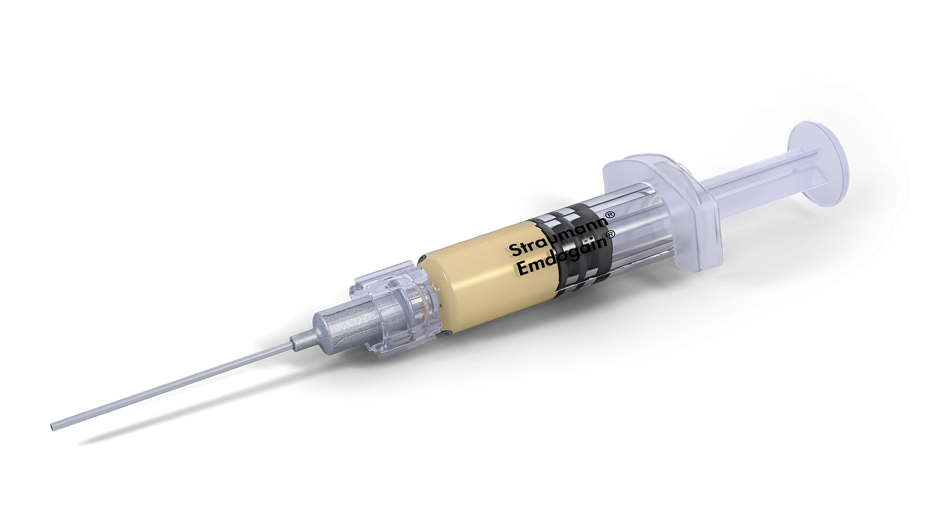
Learn more about the exciting benefits Emdogain® has to offer:
Straumann® Emdogain®: Mastering periodontal regeneration and oral wound healing
Straumann® Emdogain® FL: Cultivating periodontal regeneration.

